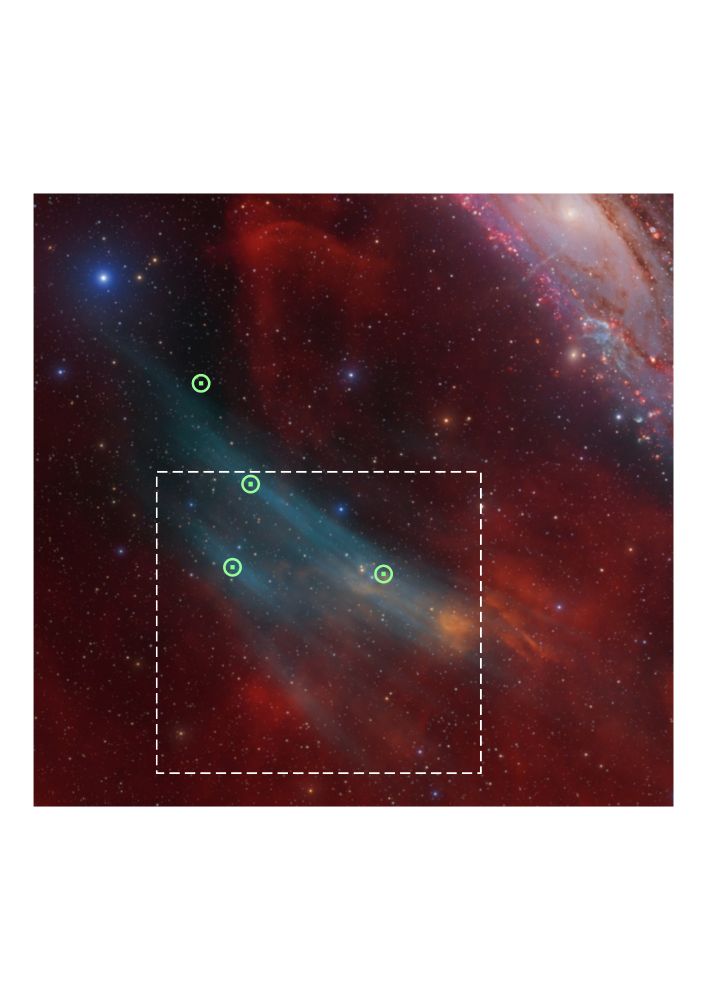
This is just the 3rd interstellar object that we see enter the Solar System.
I created this video with the observations🔭 we have made: you can see the comet moving through the field of stars.
We hope to get more data!
This is just the 3rd interstellar object that we see enter the Solar System.
I created this video with the observations🔭 we have made: you can see the comet moving through the field of stars.
We hope to get more data!
Even the statue of the Torico (little bull) was looking at the #solareclipse2025 today in Teruel (Spain)!

Even the statue of the Torico (little bull) was looking at the #solareclipse2025 today in Teruel (Spain)!
Muchos datos que mostramos como imágenes son adaptaciones para entenderlos mejor, y también se pueden traducir a sonidos y ser útil para todos.


Muchos datos que mostramos como imágenes son adaptaciones para entenderlos mejor, y también se pueden traducir a sonidos y ser útil para todos.
This consistency is more typical of smaller nebulae nearby, rather than very distant and large ones.
🔭

This consistency is more typical of smaller nebulae nearby, rather than very distant and large ones.
🔭
This is something seen in other nebulae… but only if they are close to us, not if they are as far as M31!
![Image from Lumbreras-Calle et al. 2024 https://arxiv.org/abs/2412.08327. It shows, in the background the [OIII] (in blue) and Halpha (in red) emission from the nebula near M31 discovered by Strottner, Dreschler, and Sainty. In the foreground, in blue/red contours, it shows the [OII]/Halpha emission measured with the JAST80 telescope from @CEFCA_OAJ. There is a clear separation between the [OII] and [OIII] emission.](https://cdn.bsky.app/img/feed_thumbnail/plain/did:plc:2pkpjtru5xppw6znquqtjfgg/bafkreigxytmx22r2fec2p6p3rh6kkryryhf26cmnvw6j6qdqlcmrg4jc5y@jpeg)
This is something seen in other nebulae… but only if they are close to us, not if they are as far as M31!
This suggests it's a regular nebula nearby, not a distant giant one. A bit like a forced perspective trick!
🔭

This suggests it's a regular nebula nearby, not a distant giant one. A bit like a forced perspective trick!
🔭
Today we try to decipher it! It's ✨Paper Day✨
arxiv.org/abs/2412.08327
With spectra from GTC (the largest 🔭) and OAJ large narrowband images we find the nebula is actually not related to M31!
But how?👇
#Astrophysics

Today we try to decipher it! It's ✨Paper Day✨
arxiv.org/abs/2412.08327
With spectra from GTC (the largest 🔭) and OAJ large narrowband images we find the nebula is actually not related to M31!
But how?👇
#Astrophysics
If you are interested, the data is accessible here: www.j-pas.org/datareleases... You can find the catalogs, very accurate photometric redshifts, reduced images, ADQL query server, sky viewer 🔭...

If you are interested, the data is accessible here: www.j-pas.org/datareleases... You can find the catalogs, very accurate photometric redshifts, reduced images, ADQL query server, sky viewer 🔭...
J-PAS has presented its first public data release. It has 800 000 objects observed with 54 narrowband filters!

J-PAS has presented its first public data release. It has 800 000 objects observed with 54 narrowband filters!

Also back to preparing observing proposals. Hopefully getting IFU spectra on galaxies similar to this one: blue, extremely star-forming, and analogous to the very high redshift ones.

Also back to preparing observing proposals. Hopefully getting IFU spectra on galaxies similar to this one: blue, extremely star-forming, and analogous to the very high redshift ones.
J-PAS, the most detailed imaging survey ever has just started, observing the sky from Teruel, Spain.
With 56 filters imaging thousands of squared degrees, we will open huge new window into the Universe!
www.cefca.es/news/show/252

J-PAS, the most detailed imaging survey ever has just started, observing the sky from Teruel, Spain.
With 56 filters imaging thousands of squared degrees, we will open huge new window into the Universe!
www.cefca.es/news/show/252

